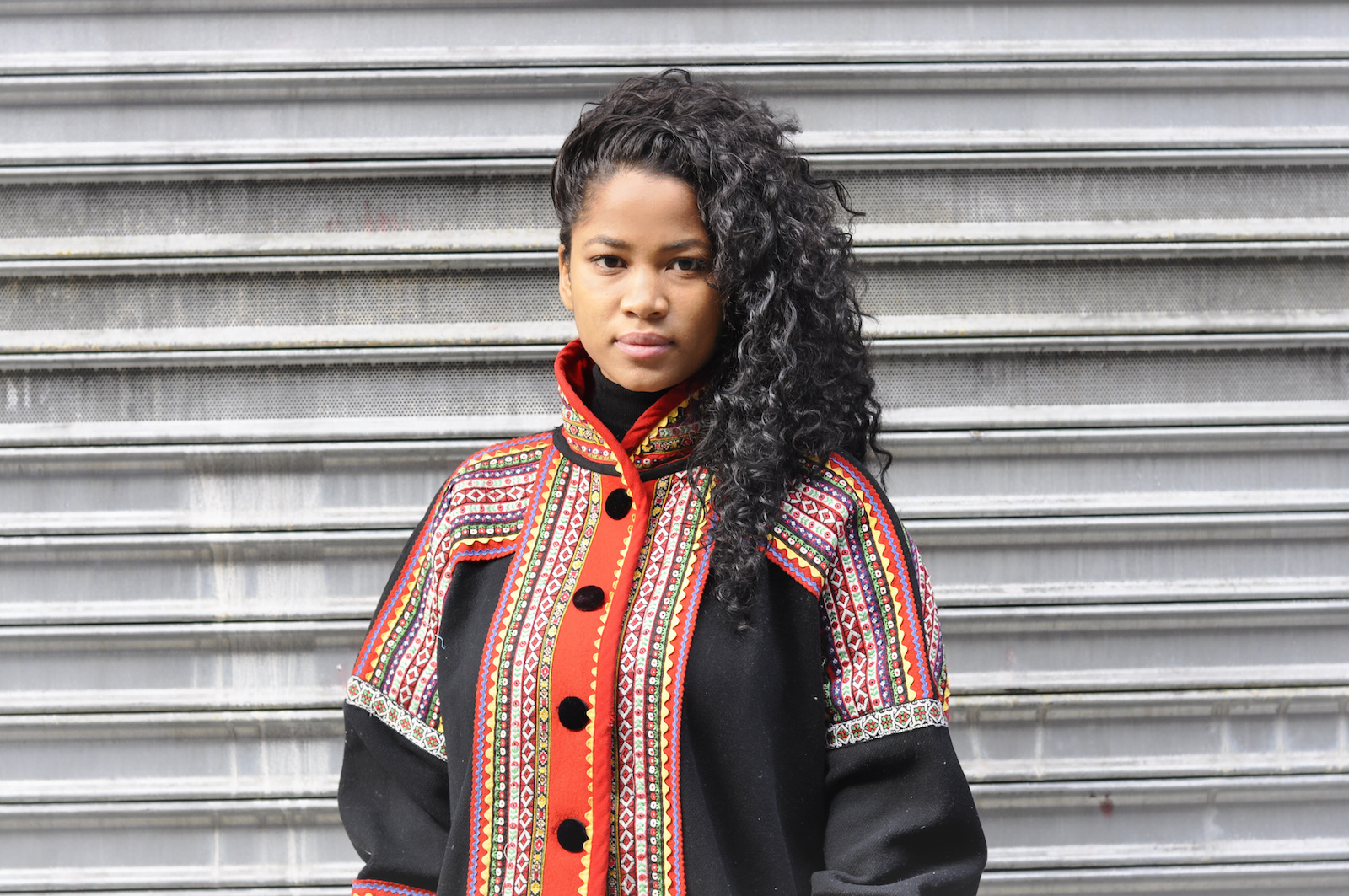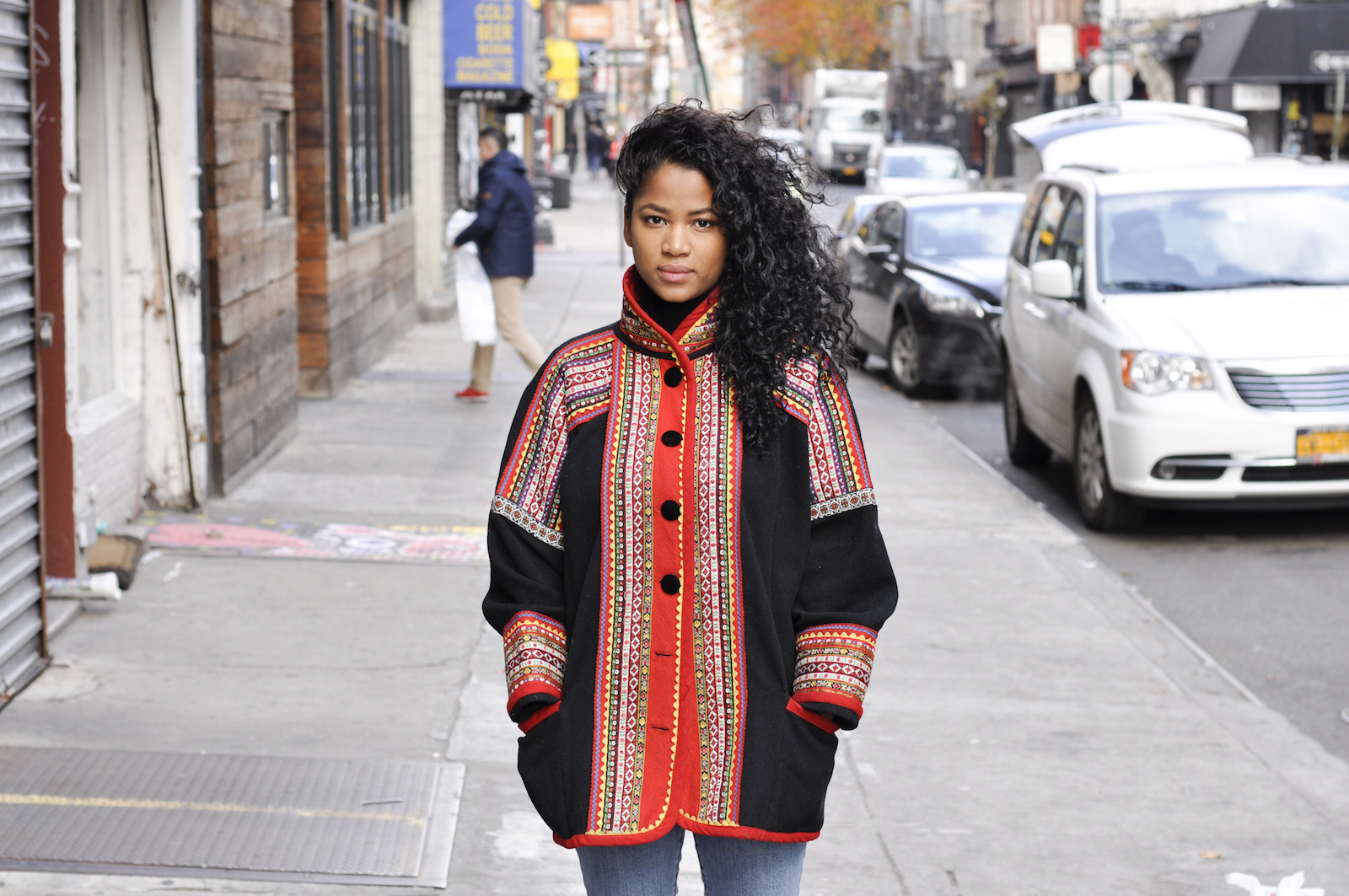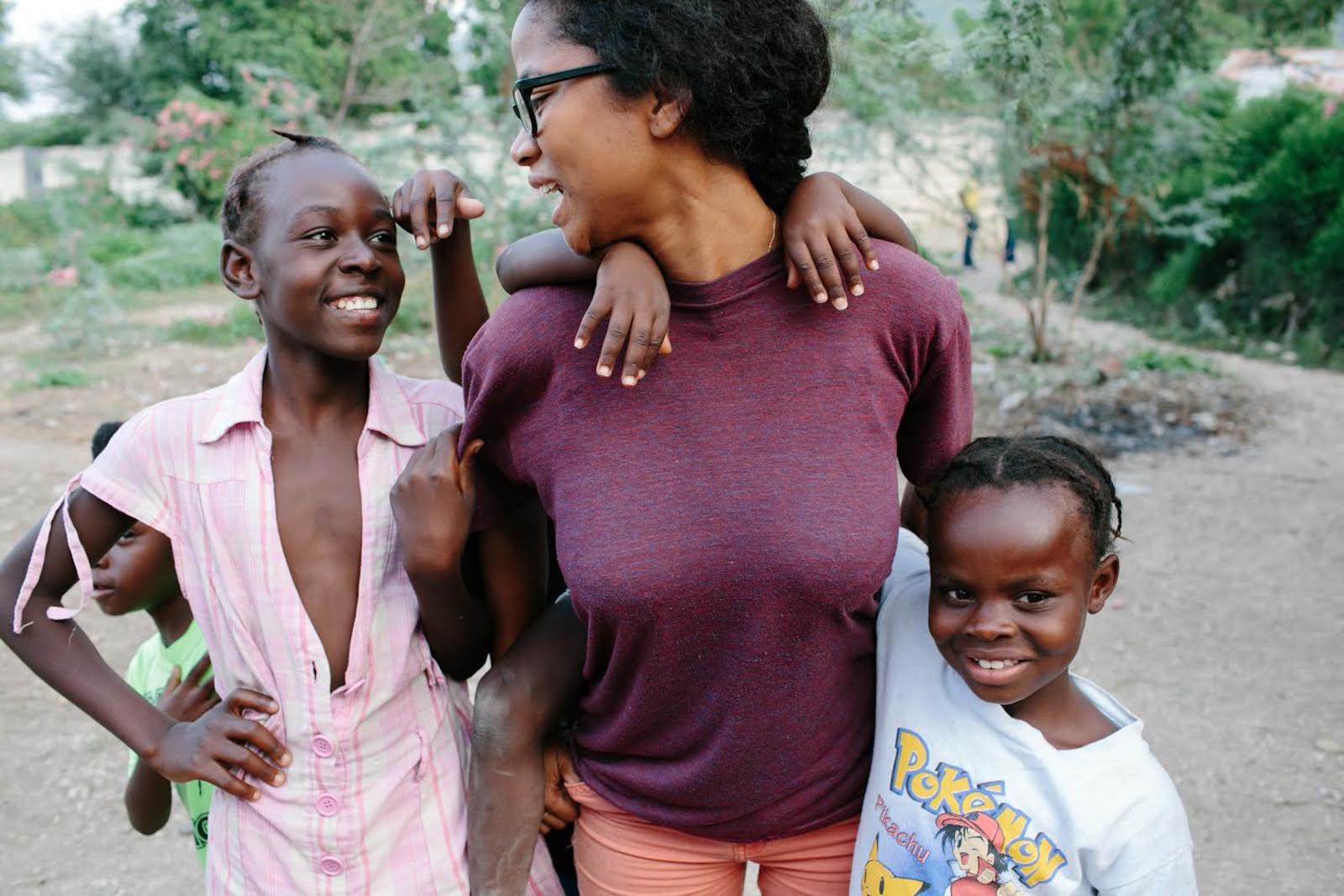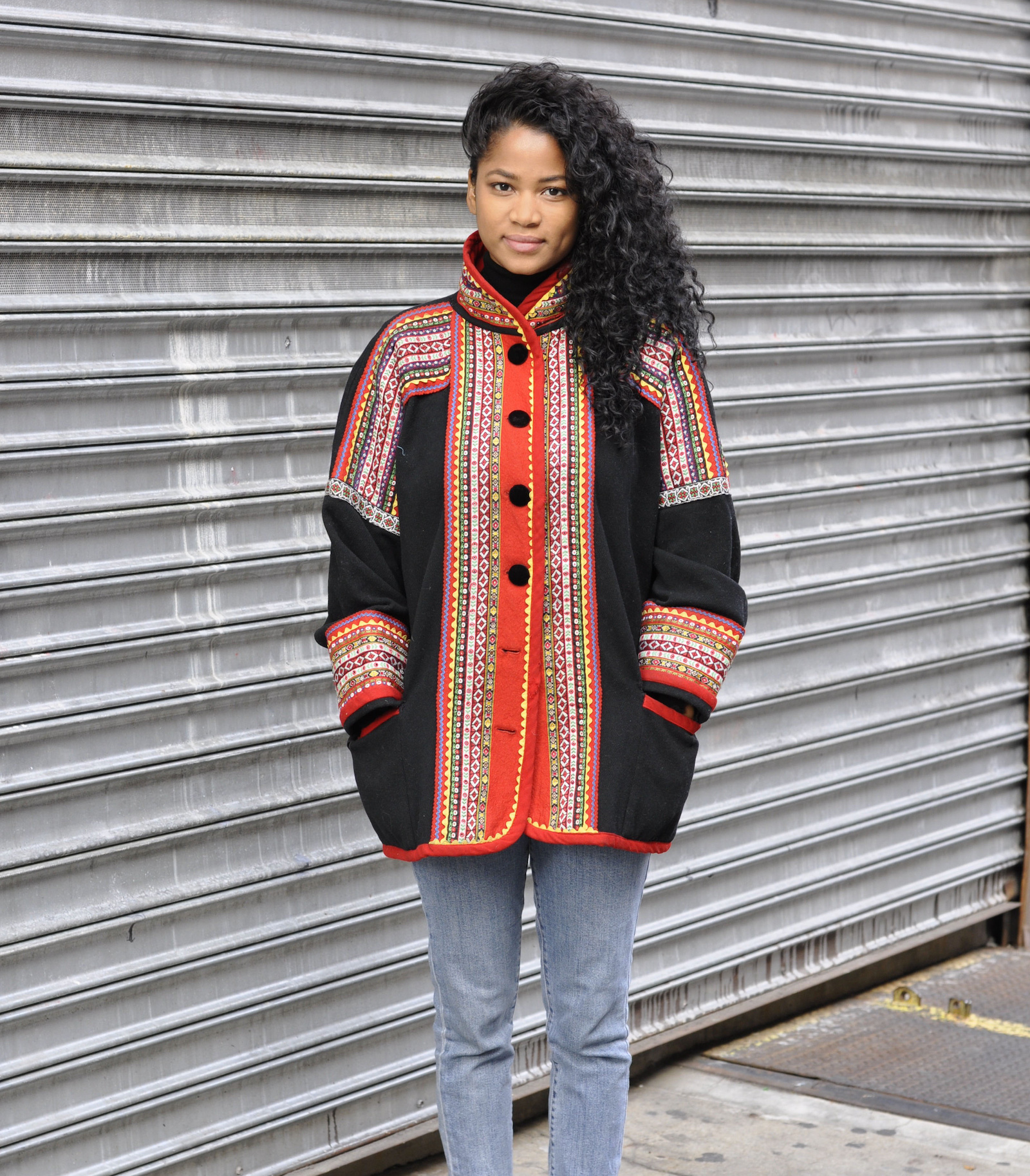
How Kettie Jean Champions Haiti and Standing Rock
February 17, 2017
Rana Good is the founder of Naïra NYC. A writer for publications such as Forbes, Travel + Leisure, Coveteur, Mens Journal and others, she created her own platform celebrating women of color.
Kettie Jean is a storyteller and activist whose documentaries will make you rethink your preconceived cultural notions. Her work can be seen on VICE and HBO, and she was also one of the first people to work on the Standing Rock Tribe’s campaign against the Dakota Access Pipeline. We spoke to her about her multicultural background, how she approaches her filmmaking, and why everyone should travel to Haiti at least once.
Heritage: Haitian and Vietnamese
Job: Story Producer
Where did you grow up?
Kettle Jean: I spent most of my life in Montreal, a very diverse city. It really taught me to be curious about different cultures, ideas and people.
Did you experience any challenges growing up?
Even though Montreal is a multicultural city, I grew up feeling like I didnt really fit in anywhere. People would always make comments like “oh you don’t really look that Vietnamese (or Asian)” or if I went to Haiti people would say “you don’t really look that Haitian.” But I am both. In addition to that, growing up, I had to face the beauty standards promoted by popular culture: blonde hair, blue eyes, tall — pretty much the opposite of what I am. I used to straighten my hair when I was younger because that’s what I was taught was beautiful. Or when I went on interviews I would straighten it because it was perceived as being more serious or “professional.” After a while I just learned to appreciate my looks and embrace being different.
What brought you to New York?
After completing my undergraduate studies at Mcgill University in Montreal, I took a job in Kenya as a community development officer. I also did field work in India and Uganda, working as a women’s rights advocate. During that time I lost my dad, which was the hardest thing I ever had to deal with. I was then determined to live by his last words by pursuing all my dreams and living by my own rules. Three days after I returned from Kenya, I packed my bags and moved to New York for an internship with the Clinton Global Initiative. While doing my internship, I started taking acting classes. However my acting stint didn’t last for long as I didn’t really enjoy being in front of a camera. I then went on to pursue a Masters in Economic and Political development at Columbia University. After that, I worked for a grassroots NGO based in the Red Zone of Port-au-Prince, Haiti. I was the chief Operating Officer, handling day-to-day operations, programs and fundraising. In a place like Haiti there’s a plethora of non-profits and it doesn’t seem to help much. I grew tired of that system and wanted to do something that could reach a larger audience and have a bigger impact. I always loved movies and decided that I wanted to create documentary films.

How did you get the skills to be a filmmaker?
I debated going back to school to study filmmaking for a long time, but then I talked to a lot of people in the business and many people whose opinion I respected a lot said to just try it. I had a friend who worked at VICE so I started pitching stories and he helped me get one of my ideas in front of a VICE producer. Months later I was hired to work on a VICE-HBO episode that was based on a story I had pitched and researched. So that was my first real production job — I didn’t really know what I was doing to be honest but it didn’t take me long to figure it out.
What do you look for in the stories you tell?
I look for stories that defy preconceived notions — stories that are or have the potential to create counter-narratives. The media business in the West is a very white, male-oriented institution, and female perspectives are not only needed but are indispensable in providing more complete stories and alternative points of view. For me, Haiti is one of the greatest counter-narratives. It was a slave nation that fought against every single imperial power for its independence and won. Yes, Haiti is poor, yes Haiti has a lot of issues, but Haiti also started a domino effect that impacted the colonial world. There are so many stories in Haiti that are untold and so many aspects of Haitian culture that are unknown to most people.
What are some of the stories that you’ve told in Haiti?
One of the first ones was about a voodoo priestess who opened her world to us. Although women are known to be the pillars of Haitian society, Haiti is still very patriarchal. But within her community, the voodoo priestess is a spiritual and a community leader. Her community is also very accepting of the LGBTQ community, which is very much marginalized in Haiti. In her house people found a place where they could be themselves and be free. She also dispelled a lot of myths about voodoo for the audience and also for me. I knew little to nothing about her world and did not know that it is those ceremonies that unified the slaves and triggered the Haitian revolution.

Image by Stephanie Meiling
Why do you think people demonize voodoo?
Since Haiti was the first slave colony to be independent, many imperial powers had a vested interest in ensuring that other slave colonies wouldn’t follow the example of Haiti. Not only did France, Great Britain and the United States impose various trade embargos on Haiti but many ill-formed depictions of its culture and religion were propagated by popular culture. For example, in 1884 Sir Spencer St. John, a British Consul in Haiti, wrote Hayti: Or, the Black Republic a book that popularized many negative myths about Haiti and its culture. The book was very popular in Great Britain and it is a great example of the racial prejudice Haiti faced when it freed itself and continues to face.
What other misconceptions do people have about Haiti?
People don’t realize how beautiful it is! Haiti also used to be a big tourist destination in the ‘70s, it was cool, elusive and a place where intellectuals would go on vacation. Haiti has pristine beaches; small islands, mountains and the people are known for their kindness. I don’t think I’ve ever brought anyone to Haiti that hasn’t gone back afterwards. It’s one of those places that when you fall in love with it, you fall hard and constantly want to go back.
What kind of treasures can you take home with you from Haiti when you visit?
I always bring back coffee, cacao and vanilla whenever I go back. We also grow vetiver which is used for perfumes. I mostly use natural Haitian products in my beauty routine, which consist of almond soap, Moringa and Papaya oil.

Tell me about your experience at Standing Rock.
The Standing Rock Tribe hired me back in March 2016 to produce a campaign that would raise awareness about an oil pipeline they were fighting. The campaign was meant to be a platform for Native American youth, who the pipeline would affect the most. I helped the tribe and young native leaders with campaign strategy, a petition, building social media platforms and cultivating an audience. Social media played a key role in the Standing Rock battle against the Dakota Access pipeline. It helped people share information widely and quickly and it also helped citizen journalists share the story when mainstream media was absent. One of the things I also had the honor of helping the youth with was their 1800-mile relay run from North Dakota to Washington D.C. During which, they raised awareness amongst every tribe along the way and touched the heart of hundreds of thousands of natives and non-natives across North America and the world.
What made people rally behind the cause?
The native youth voice is what inspired people the most I believe. And their cause – protecting their water and Unci Maka (Mother Earth) is a no-brainer. It’s a universal fight. The resilience of the Standing Rock Tribe also inspired people. Working with the tribe made me realize how little information or media coverage is out there about life on reservations across North America. For example there are more Native Americans that are killed (per million) by police than African Americans — that’s something we don’t hear about. It’s an underreported issue. Not only was their land taken away from them but their culture and language was also threatened. And they still have to fight for their basic rights. The spirit and resilience of the Standing Rock people was very familiar to me. It reminded me of my own people, of Haiti. Standing Rock felt like home from the first moment I set foot there.
What are some of the challenges women and minorities are going to face with the new administration?
It’s scary, there are climate change deniers, people who think women shouldn’t have autonomy over their bodies, people who think it’s okay to be racist. It gives license to people to hate. What is currently happening worries me and there are definitely many challenges ahead. However, I also think it’s a great time for us to come together, it’s a wake-up call. We have to fight for the values we now realize were taken for granted.
so inspiring kettie